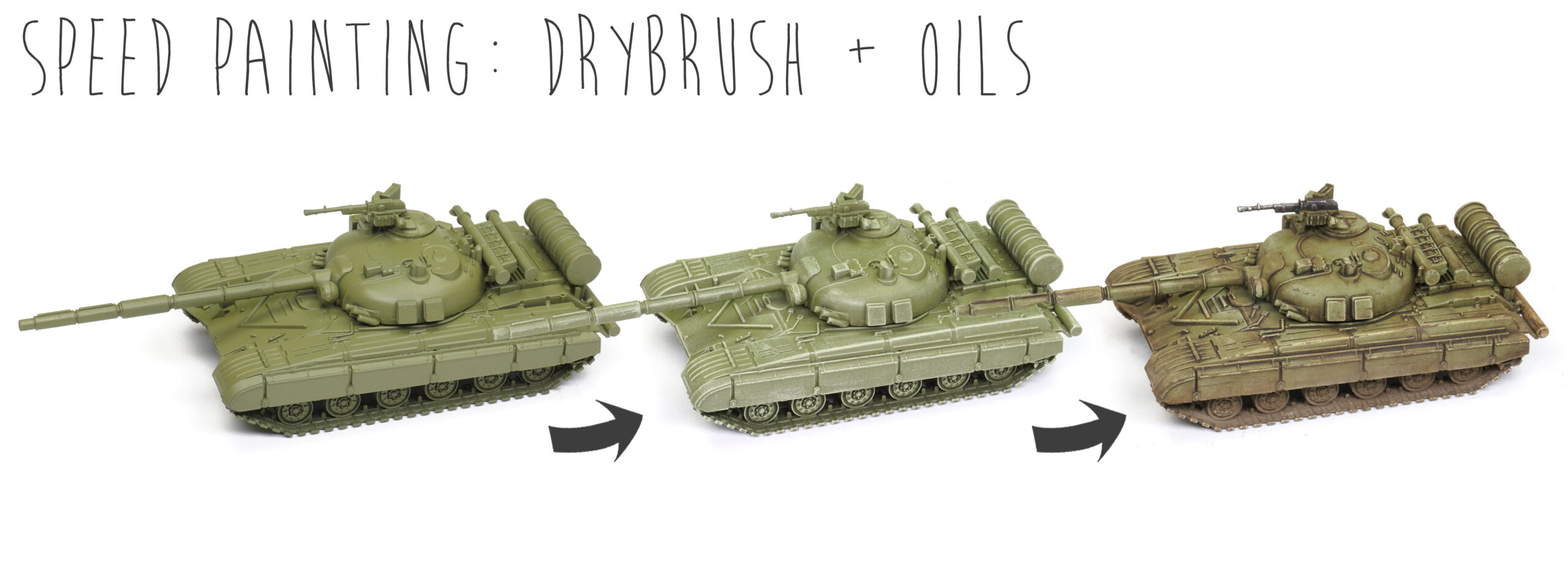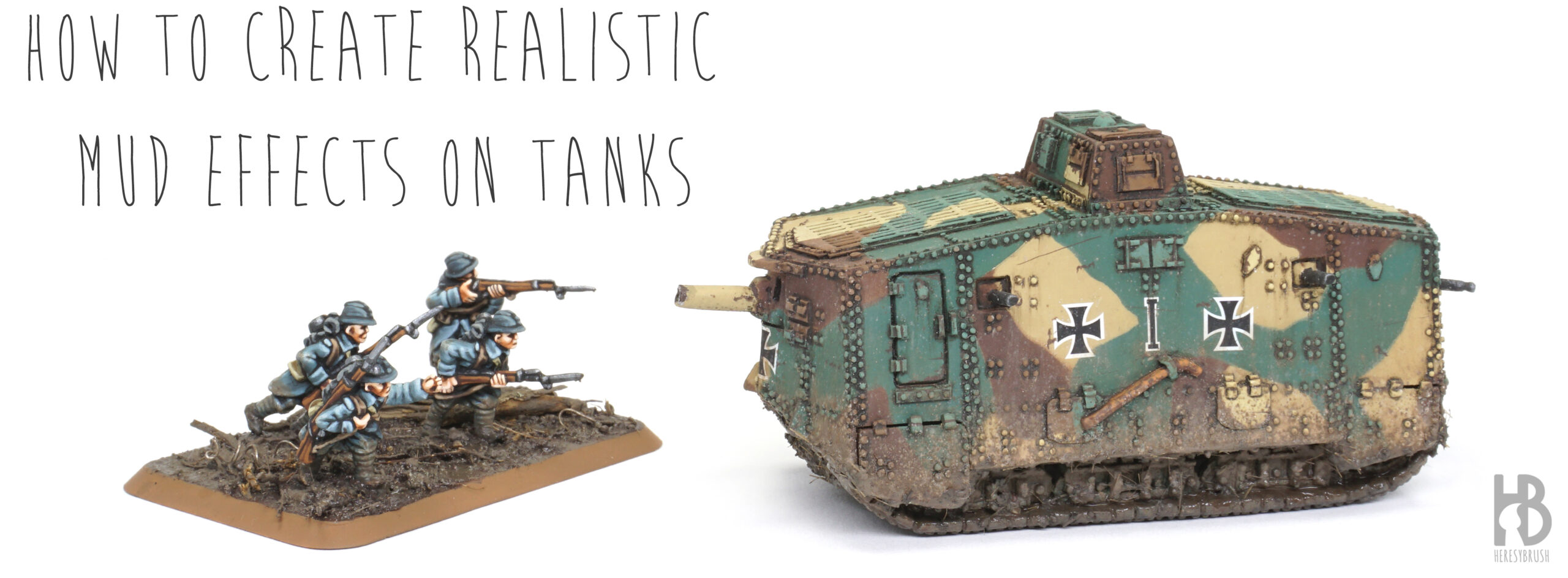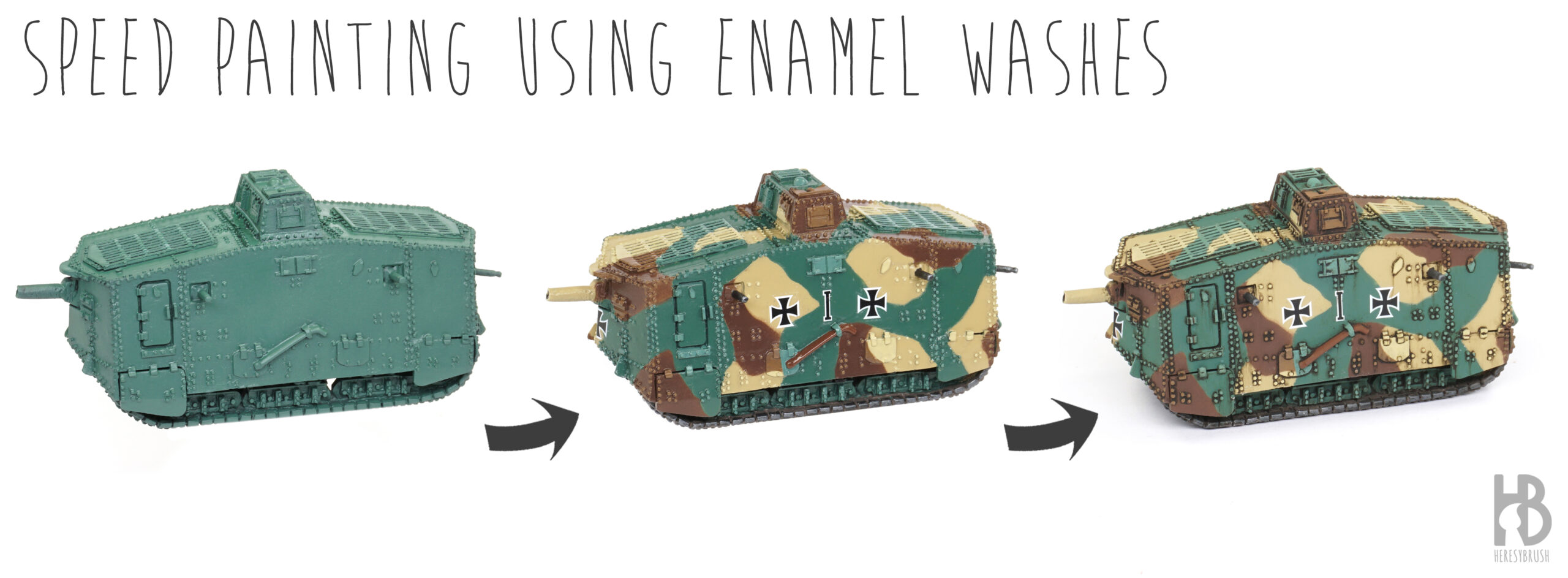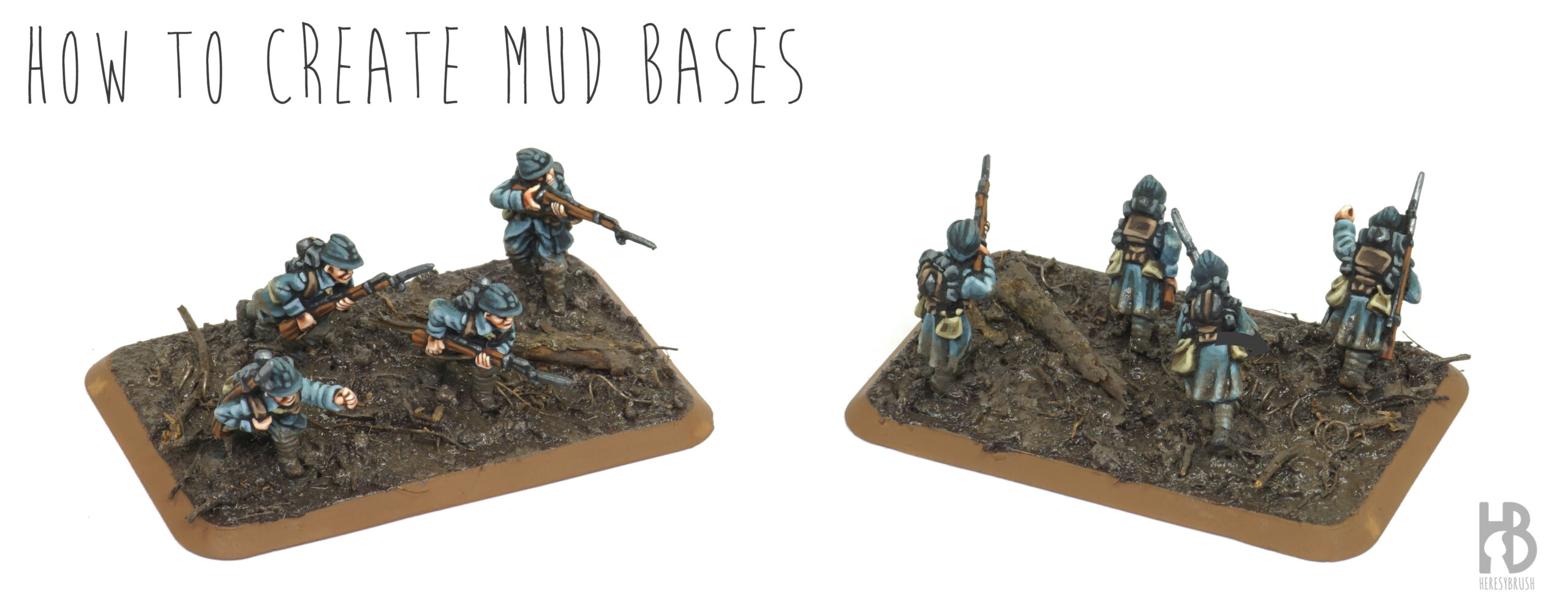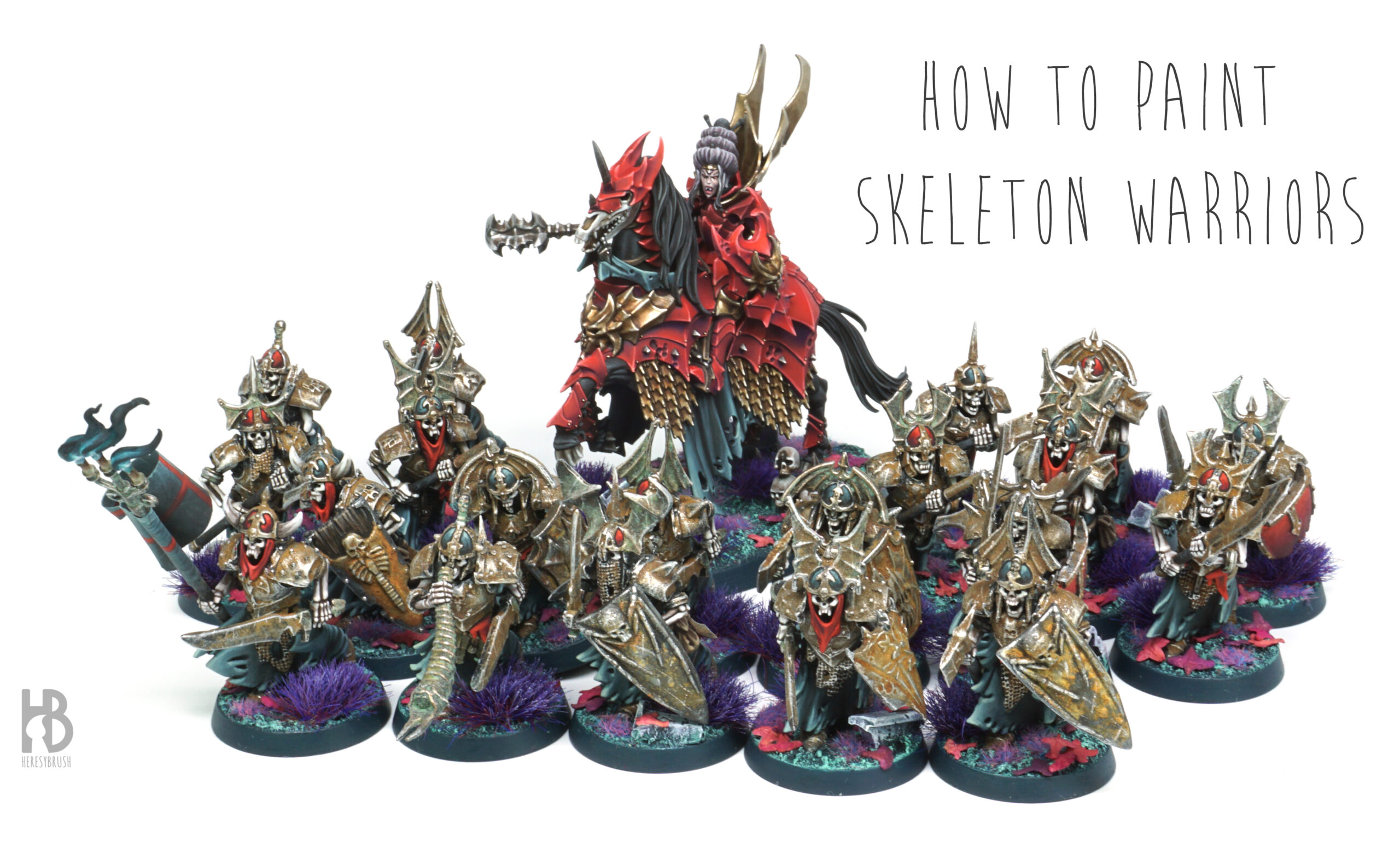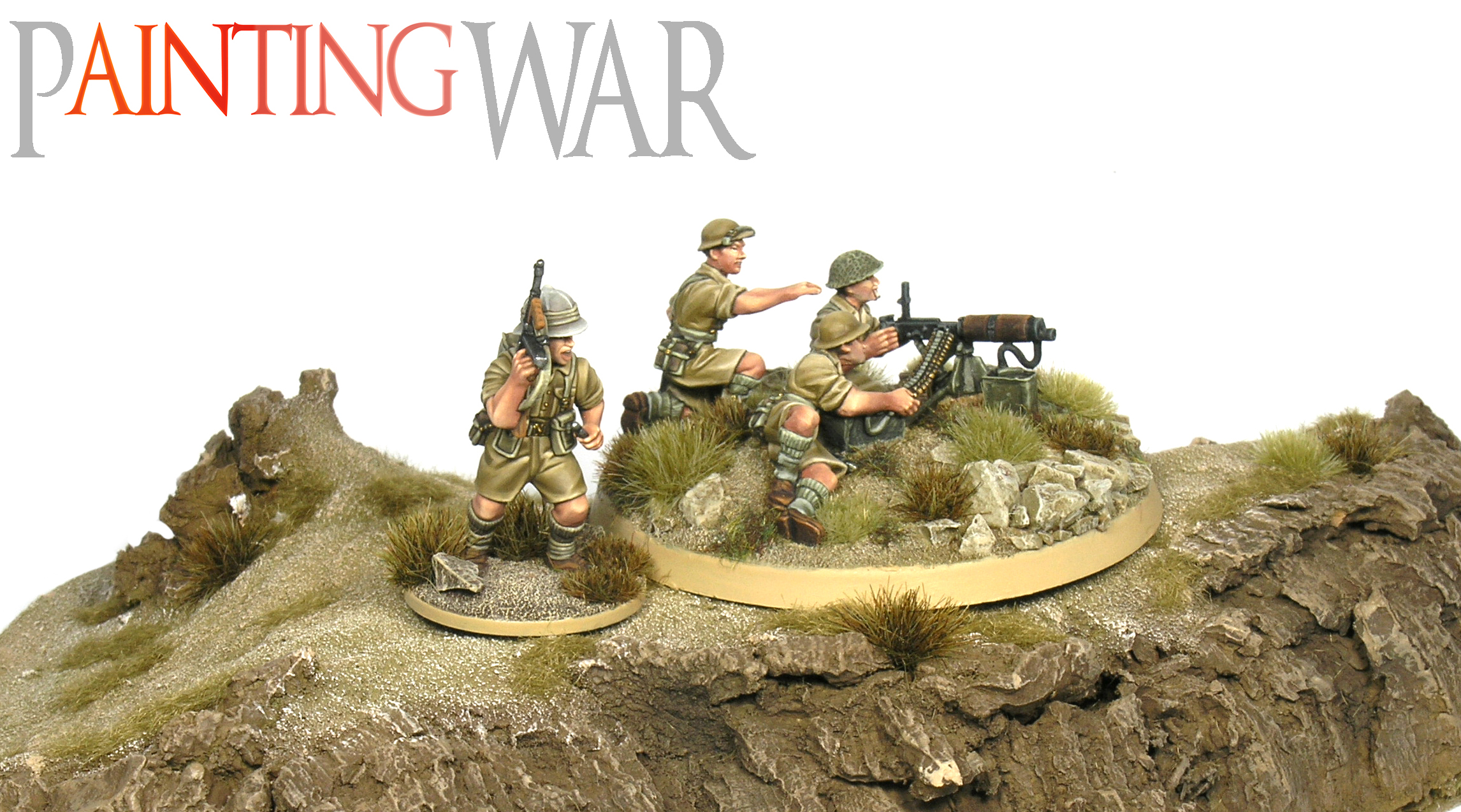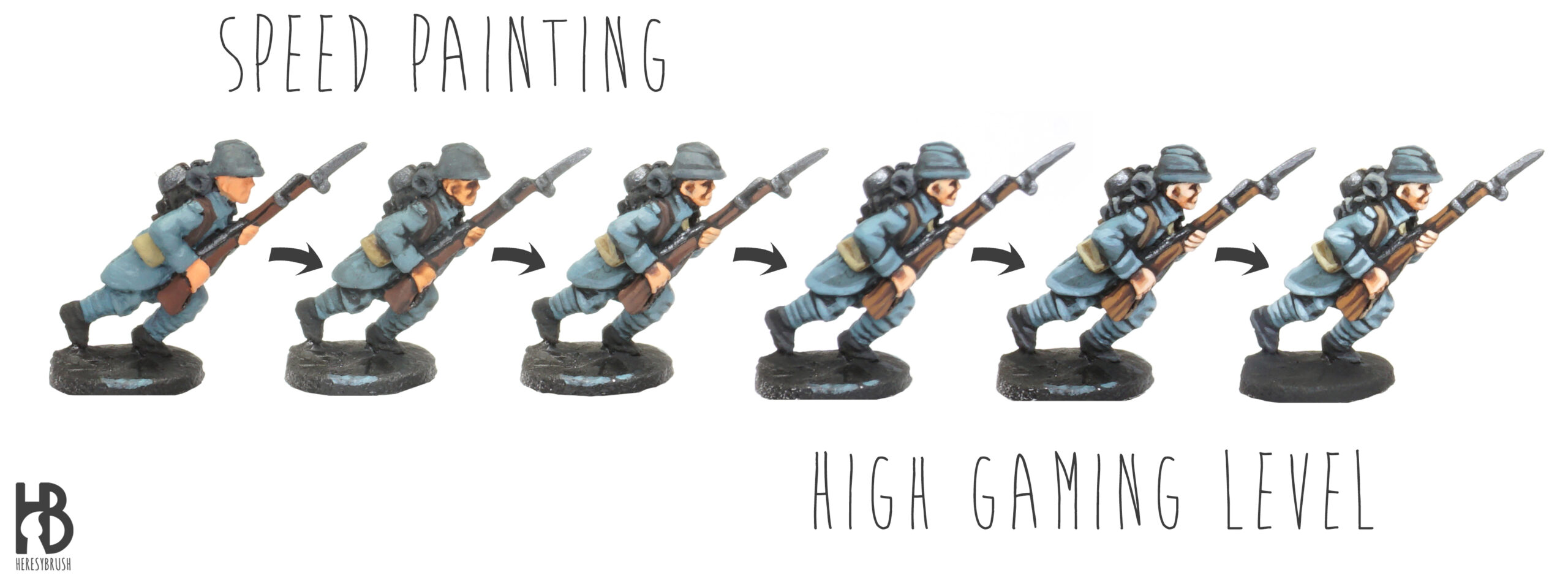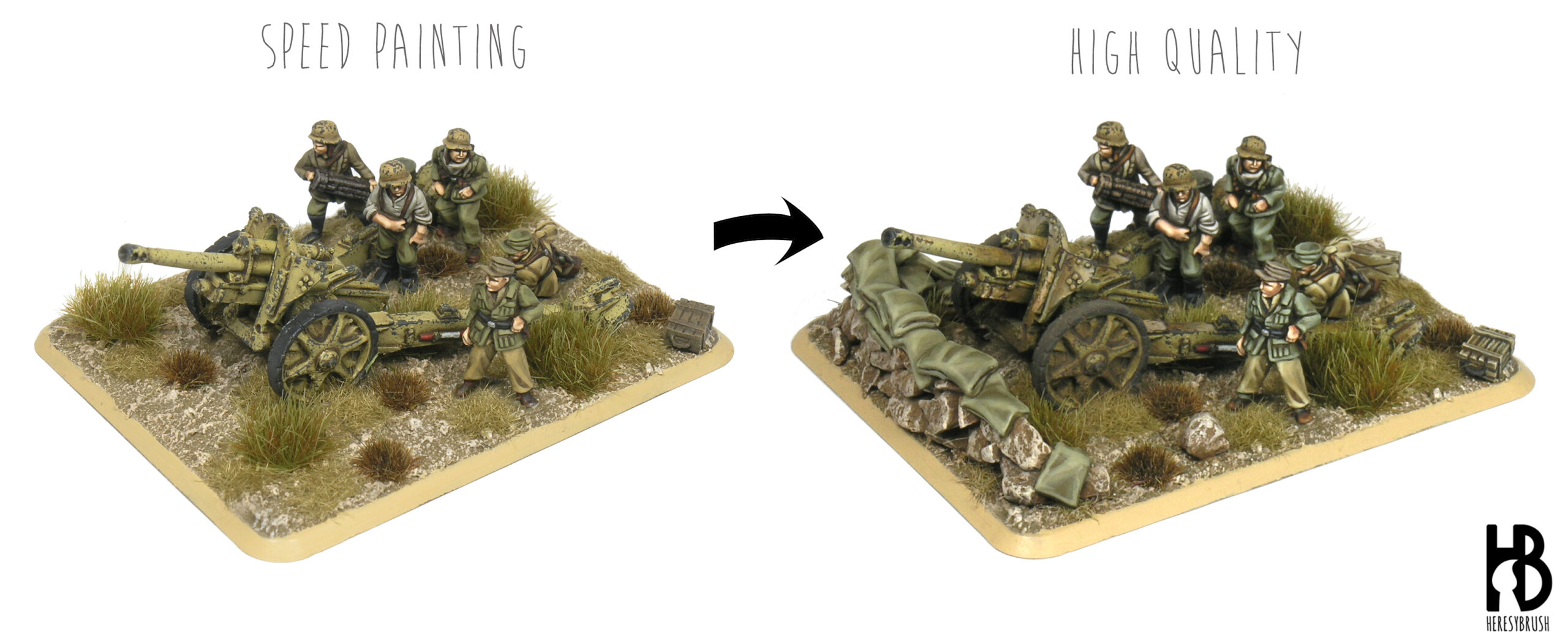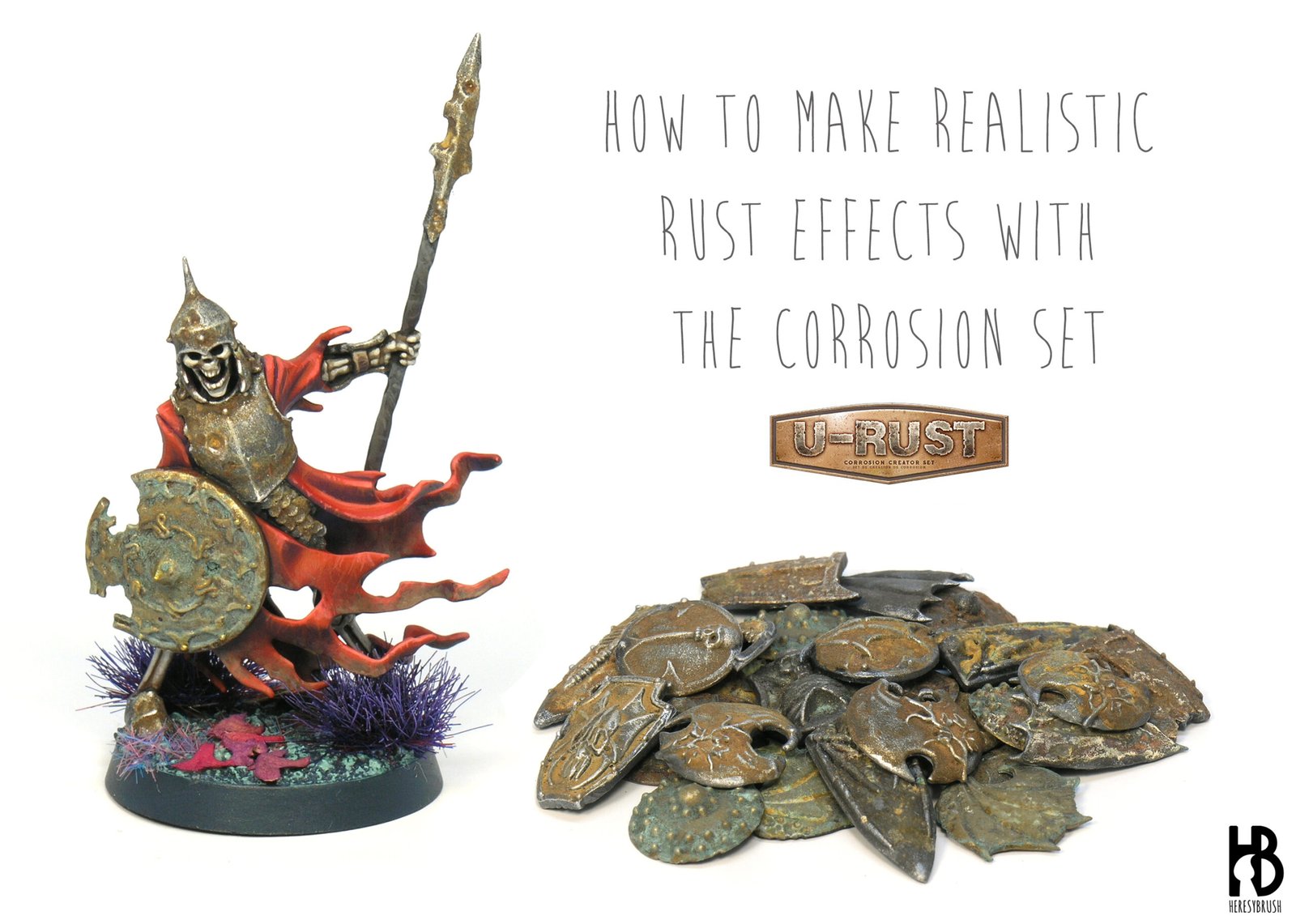In this tutorial, we will explore techniques for enhancing a basic paint job using oil paints. Unlike acrylics, oil paints require an organic solvent like White Spirit or turpentine (which is toxic, such as Enamel Odourless Thinner A.MIG-2019) instead of water; and take hours to dry, as opposed to mere seconds with acrylics. However, this extended drying time lends oils the advantage of effortless blending, allowing for the creation of multiple effects. For instance, we can employ this property to generate shadows, thereby enhancing the sense of volume, or to simulate various weathering effects such as dirt or dust accumulation.…
How to create mud effects on 1/100 tanks
This article was originally published on the Battlefront website, here. This article is a follow-up of Painting WWI German AV7 tank: the art of enamel washes. As demonstrated recently in another tutorial on painting Painting WWI French Fusiliers: How to create mud bases, the idea is to create mud effects rather than simply painting them. While wargamers often resort to the dry-brush technique using acrylics to simulate mud, the results, while interesting, may lack the texture typically associated with this particular effect. To address this, we can turn to specialized products designed to achieve hyper-realistic mud effects. These products not…
Painting the WWI German AV7 tank: the art of enamel washes
This tutorial was originally published on the Battlefront website, here. Acrylic paints are the most popular choice for wargamers, and in most cases, the only option on the painting bench. This preference is quite logical, as acrylic paints are readily available, non-toxic, quick-drying, and overall user-friendly. However, if we take a closer look at what Scale Modelers do, we will discover that they employ a variety of paint types, including acrylics, lacquers, oils, enamels, and powder pigments. The distinct features of each type of paint can be utilized to perform specific steps or achieve particular effects. Therefore, having a understanding…
How to create mud bases
This article was originally published on the Battlefront website: here. As wargamers, we frequently opt to paint bases rather than create them. While it is true that we usually incorporate some form of texture, often achieved by adhering sand with glue, the subsequent step typically involves multiple layers of drybrushing painting. However, for the sake of achieving more authentic bases and scenery, it is advisable to create the texture entirely instead of relying on painting. A notable example is mud; painting mud effects can be quite challenging, while creating realistic mud effects becomes remarkably straightforward when employing the right tools…
Videotutorial: how to paint skeletons
A while back, we reviewed the U-Rust kit from AMMO, which allows for the creation of realistic rust effects in a simple and effective manner (see more here). Capitalizing on the knowledge obtained from that test, I decided to use it to paint one of my Grave Guard units for my Soulblight Gravelords army in Age of Sigmar. This seemed ideal, given that these miniatures are predominantly clad in rusted armor! In collaboration with AMMO, I created three video tutorials featuring how to create rust effects using the U-Rust kit, how to paint bones, and how to paint fabric. The…
PaintingWar: WWII British and Commonwealth armies
After 10 years since the publication of my very first painting book I am delighted to announce another PaintingWar (PW) publication, made possible by Miniaturama Publishing. This marks my third contribution to the PW series (with the previous two being WWII German army and Spanish Civil War), delving again into one of my favorite topics in historical wargaming: World War II. While my initial PaintingWar issue centered around the German army, this latest book shifts its focus to the British and Commonwealth armies. Using exclusively Warlord Games miniatures in 28mm, and similar to previous PaintingWar publications, this book is divided…
Painting 15mm WWI French Fusiliers: Combining washes and layering
Wargamers frequently find themselves seeking a balance between painting and gaming, which often leads them to prefer fast painting techniques. These methods are typically straightforward and swift, and, importantly, highly effective. However, it is worth noting that the trade-off is often between speed and quality, with quality being inversely proportional to the time invested. In this tutorial, we will explore the fusion of a fast-painting technique that involves washes with a more sophisticated method by incorporating successive layers of highlights. To clarify, we will begin with the conventional ‘base + wash + highlight’ technique and progressively enhance our results…
Improving a 15mm paint job: guns and crew
Most popular painting techniques for wargames fall in the category of fast painting methods that aim for the so-called “tabletop quality”. The idea is to have ready a unit or an army as soon as possible, with each miniature painted with the right colors and a bit of contrast between shades and highlights. These quick methods are perfect for wargamers since they do not require much time, allowing the players to spend more time in the battlefield. But, sometimes we have some extra time that we can use to push forward the quality of our miniatures for wargames. I would…
New book: How to Paint Miniatures for Wargames
A few years back I published a painting book featuring how to paint wargames tanks and edited by AMMO. I had the intention to write a second volume about painting infantry for wargames, but it was postponed because I was very busy doing my PhD. Now, eight years later, the second volume has been finally released again thanks to the support of the AMMO team: How to paint miniatures for Wargames. I was not alone in this project. I had the great opportunity to collaborate with some of the wargames painters I admire the most, including the amazing historical painters…
How to make realistic rust effects
Some weathering effects are created rather than painted. This applies to any textured effect, such as mud, snow or rust, among others. Of course, we can try to simulate these by painting them. But it is easier -and more realistic when painting a 3D model- when we create them. In this tutorial I will explore the new corrosion creator set by AMMO, U-Rust, designed to create textured rust effects. I think that this kit was initially meant for dioramas and big scale models, but as a wargamer I was curious to see whether we could also use it to paint small…
